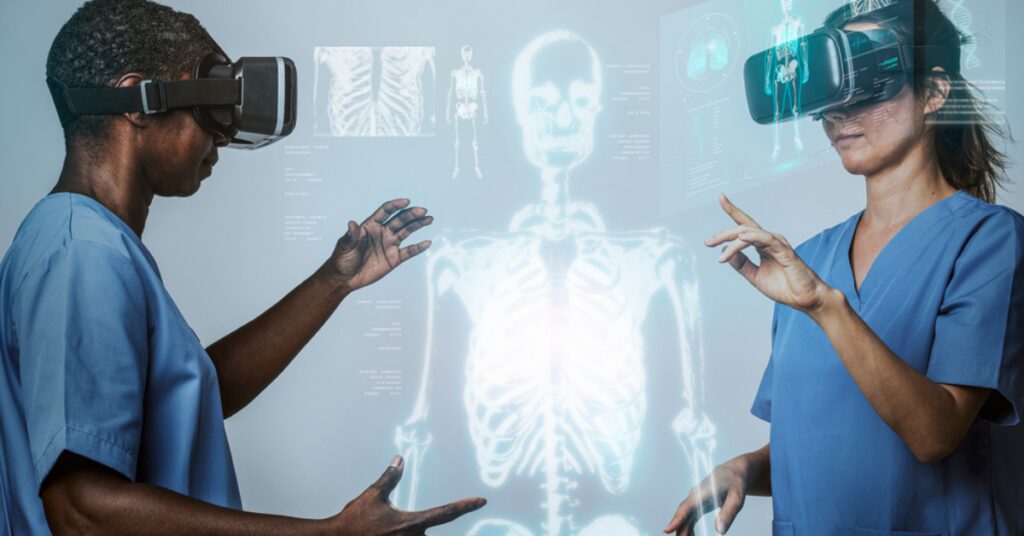This content discusses the transformative potential of virtual reality (VR) and augmented reality (AR) technologies. The author shares personal insights and experiences with VR and AR, highlighting their application in various domains such as gaming, education, healthcare, and retail. VR offers complete immersion in virtual environments, while AR overlays digital content onto the real world. Both technologies have the potential to enhance industries and everyday life. Challenges include the high cost of entry, user discomfort, and ethical concerns. However, as hardware becomes more affordable and accessible, the future of VR and AR looks promising in terms of advancements and integration into everyday life.
From Virtual Reality to Augmented Reality: Personal Insights into Immersive Technologies
Introduction
Immersive technologies, specifically virtual reality (VR) and augmented reality (AR), have revolutionized the way we interact with digital content. These technologies offer unique and immersive experiences that transport users to virtual worlds or overlay digital information onto their real surroundings. As an avid enthusiast and early adopter of such immersive technologies, I have had the privilege of witnessing their evolution from clunky prototypes to sophisticated devices with widespread adoption. In this article, I will share my personal insights and experiences with VR and AR, highlighting the transformative potential of these technologies in various domains.
Virtual Reality: Escaping Reality
Virtual reality technology allows users to enter an artificially created environment, completely immersing themselves in a digital world. From strapping on a headset to donning motion-tracking controllers, VR delivers a sense of presence and interactivity like no other. As a gamer, I was instantly captivated by the limitless possibilities VR offered. From exploring fantastical realms to engaging in intense first-person shooter battles, VR gaming took me to another dimension. The level of immersion is so intense that I often found myself emotionally attached to virtual characters and deeply engaged in virtual narratives.
However, VR is not limited to gaming alone. It has found applications in various sectors, including education, healthcare, and architecture. For instance, medical students can practice complex surgeries in a simulated environment, architects can visualize and manipulate 3D models of buildings before construction, and individuals experiencing anxiety or phobias can undergo exposure therapy within a controlled virtual reality setting. The potential for VR to enhance numerous industries is immense, and its capabilities are only limited by our imagination.
Augmented Reality: Enhancing Reality
While virtual reality creates a wholly immersive experience, augmented reality takes a different approach by overlaying digital content onto the real world. AR enables users to interact with virtual objects while still being aware of their physical surroundings. The introduction of AR through mobile applications like Pokémon Go brought this technology into the mainstream consciousness. Suddenly, people of all ages were chasing digital creatures in parks and on sidewalks, blurring the boundaries between the virtual and physical realms.
AR holds tremendous potential outside of gaming as well. In industries like retail, AR allows customers to visualize how furniture or clothing will look in their homes or on themselves. In the medical field, surgeons can use AR headsets to gain real-time visualizations of internal structures during procedures. AR also plays a significant role in navigation, with heads-up displays providing relevant information directly in a user’s field of view. This technology can offer tremendous benefits in day-to-day life, enhancing our experiences and simplifying complex tasks.
Challenges and Future Considerations
As with any rapidly advancing technology, VR and AR face numerous challenges. One of the most significant hurdles is the high cost of entry. Although prices have been steadily decreasing, VR headsets and AR glasses remain relatively expensive for the average consumer. Additionally, developers face the challenge of creating compelling and engaging experiences that go beyond novelty. As the technology evolves, content creators must continue pushing boundaries to keep users captivated and interested.
Another consideration is the potential negative effects on physical and mental health. Extended periods of VR usage can cause discomfort, motion sickness, and eye strain. Striking a balance between immersion and user comfort is crucial. Moreover, the ethical implications of these technologies must be addressed. AR, in particular, raises concerns about privacy and surveillance, as information can be overlaid on physical spaces.
Looking to the future, the possibilities for VR and AR seem boundless. As hardware becomes more accessible and affordable, adoption rates will increase exponentially. We may see significant advancements in social VR, further blurring the lines between digital and real-world interactions. Additionally, AR will likely expand beyond mobile devices and find its way into wearable technology, integrating seamlessly into our everyday lives.
Conclusion
Immersive technologies like VR and AR have opened up a realm of possibilities previously confined to science fiction. These technologies offer us unparalleled experiences, from escaping reality in virtual worlds to enhancing reality through digital overlays. As I reflect on my personal journey with immersive technologies, I am excited to see how they continue to transform industries, education, healthcare, and entertainment. While challenges persist, the potential for a future enriched by these immersive technologies is truly limitless.
